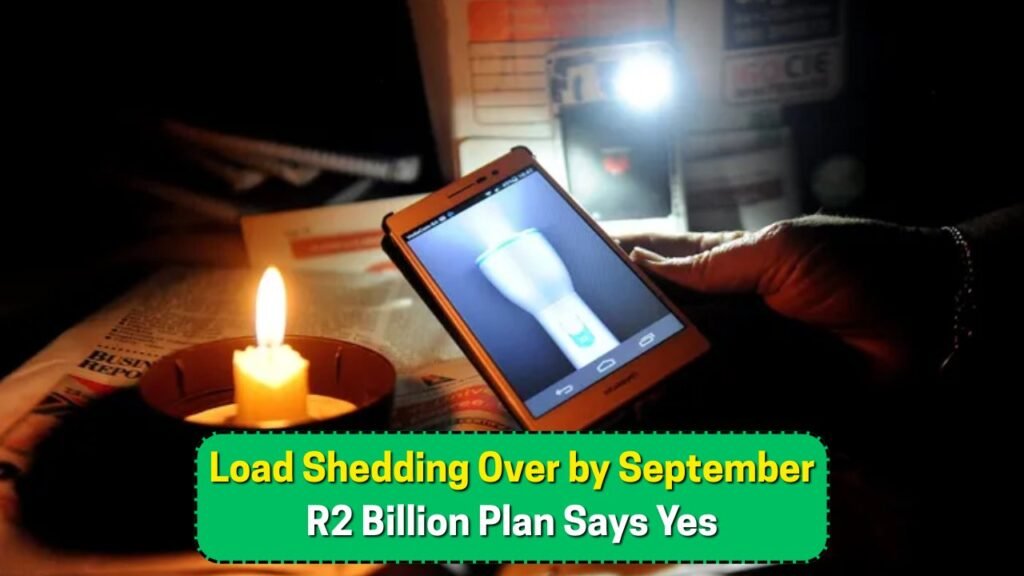R2 Billion Power Rescue Plan: South Africa has long been plagued by consistent power outages, popularly known as load shedding. With the advent of a new R2 billion rescue plan, there is a renewed hope among citizens that these disruptions might become a thing of the past by September 2025. The ambitious plan aims to stabilize the nation’s power grid, ensuring a more reliable energy supply for both residential and industrial users. As the government and stakeholders work tirelessly to implement this strategy, there is cautious optimism about its potential success in ending load shedding once and for all.

Understanding the R2 Billion Initiative to End Load Shedding
The R2 billion initiative is not just a financial commitment—it’s a comprehensive strategy designed to tackle the root causes of load shedding in South Africa. At its core, the plan focuses on enhancing the capacity and efficiency of existing power stations while simultaneously investing in renewable energy sources. The government, in collaboration with private sector stakeholders, intends to roll out new technologies that promise to modernize the country’s outdated energy infrastructure. By upgrading the current systems and incorporating cutting-edge solutions, this initiative seeks to create a more resilient and sustainable power grid. This will not only address immediate shortages but also lay the groundwork for long-term energy security.
Key Challenges Facing the R2 Billion Power Rescue Efforts
Despite its promising objectives, the R2 billion power rescue plan faces several substantial challenges that could impact its effectiveness. Foremost among these is the need for rapid implementation amidst bureaucratic hurdles and potential political opposition. Additionally, the current state of the national grid requires substantial refurbishment, which may necessitate temporary increases in load shedding during the transition period. Moreover, securing the necessary buy-in from all stakeholders, including local communities and environmental groups, is crucial for the plan’s success. The government must also ensure that financial resources are allocated transparently and efficiently to prevent mismanagement and corruption, which have historically hampered infrastructure projects in the country.
The Role of Renewable Energy in South Africa’s Power Rescue Plan
Renewable energy sources are a focal point of the R2 billion power rescue plan, reflecting a global shift towards sustainable energy solutions. South Africa is blessed with abundant natural resources, such as solar and wind, which can be harnessed to reduce reliance on coal-fired power stations. By investing in renewable energy projects, the government hopes to not only diversify the energy mix but also reduce carbon emissions, aligning with international environmental commitments. These projects are expected to create jobs and spur economic growth, particularly in rural areas where many of these facilities will be located. The successful integration of renewables into the national grid could provide a reliable and eco-friendly alternative to traditional energy sources, significantly contributing to the end of load shedding.
Timeline and Expectations for the September 2025 Load Shedding Target
Achieving the ambitious goal of ending load shedding by September 2025 will require meticulous planning and execution. The timeline set by the government indicates a phased approach, with short-term goals aimed at stabilizing the power supply and long-term objectives focused on sustainability. Initial efforts will concentrate on boosting current production capabilities and reducing wastage through efficiency improvements. As these measures take effect, the transition to renewable energy will gather momentum, providing a cleaner and more reliable power supply. While the path to ending load shedding is fraught with challenges, there is a palpable sense of hope that, with concerted effort and collaboration, South Africa can finally overcome this persistent issue by the targeted date.
How effective is the R2 billion power rescue plan against load shedding?
The plan aims to end load shedding by September 2025.
What impact could the R2 billion power rescue plan have on load shedding?
 South Africa Faces Crisis: 150,000 Students Affected by NSFAS Payment Delays in August 2025
South Africa Faces Crisis: 150,000 Students Affected by NSFAS Payment Delays in August 2025
It aims to end load shedding by September 2025.





